Overview
The Grand People’s Study House is North Korea’s national library, with a catalog of over 30 million books, and the study center of the Juche Idea, North Korea’s national ideology. The Grand People’s Study House is used for study, research, extracurricular classes, events, conferences, and speeches, and is connected to universities and schools by state network.
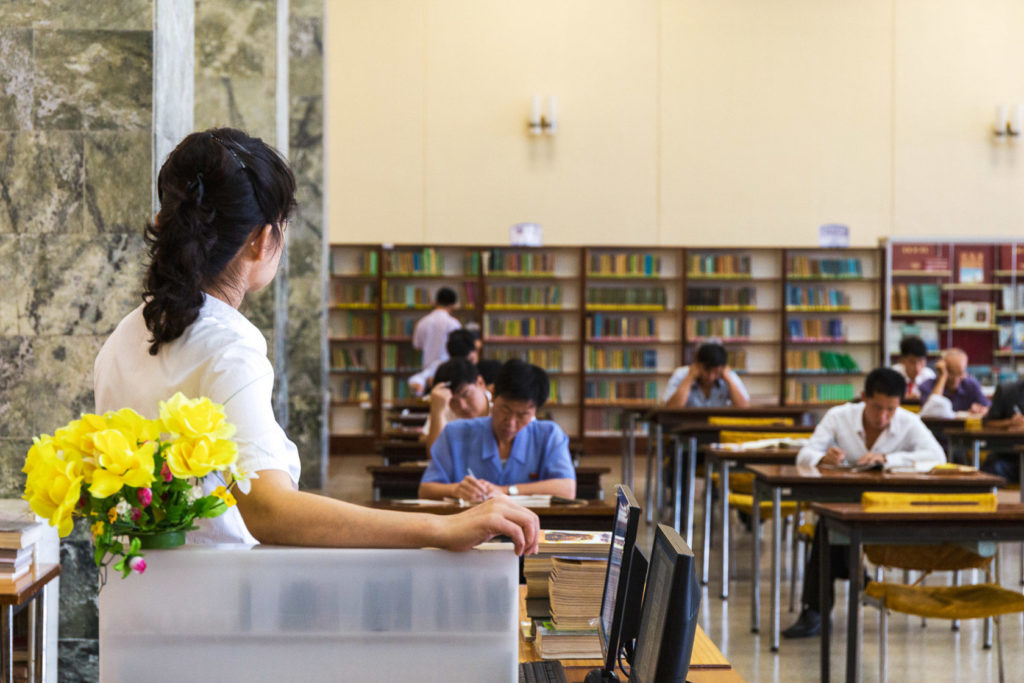
The Grand People’s Study House was built in 1 year 9 months and inaugurated in April 1982 for President Kim Il Sung’s 70th birthday. It’s a 10 story structure built in traditional Korean style, the roof made up of over 750,000 blue tiles. The entire floor space is 100,000m², has a seating capacity of 5,000 people across its 600 rooms, and is said to see up to 12,000 people per day through its doors.
Due to its location, the Grand People’s Study House is perhaps the most photographed building in North Korea and forms the backdrop to televised parades and events in Kim Il Sung Square.
Location
The Grand People’s Study House is located at the head of Kim Il Sung Square on Namsan Hill, in the heart of Pyongyang. This prime real estate places it among North Korea’s most significant government buildings and is symmetrical to the important Tower of the Juche Idea across the Taedong River.
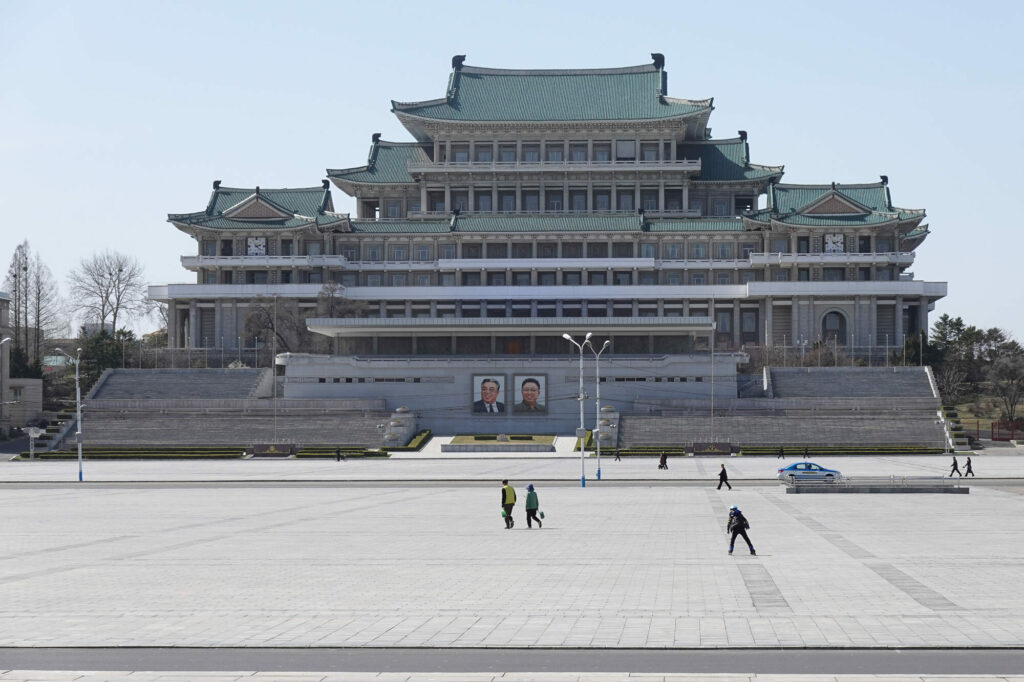
Kim Il Sung Square was completed in 1954 as part of postwar reconstruction, however, Namsan Hill sat vacant until the Grand People’s Study House was built on it over 25 years later. President Kim Il Sung rejected proposals to place a government building here, asserting that the site’s importance meant it should be occupied by a public building for the people. He proposed a national library instead, and hence the Grand People’s Study House was born.
Visitors enter the Grand People’s Study House from the east, nearby the Mansudae Fountain Park and Mansudae Grand Monument.
The nearest Pyongyang Metro station is Sungri (Victory) on the Chollima line.
How is it used?
The Grand People’s Study House is a central hub to pursue lifelong learning. The concept of ‘study while working’ was introduced by President Kim Il Sung in 1951, which is to further your education outside of your work or schooling hours, and remains a guiding principle under the framework of the Juche Ideology. To become a prosperous nation, it’s asserted that it must be advanced in science and technology.
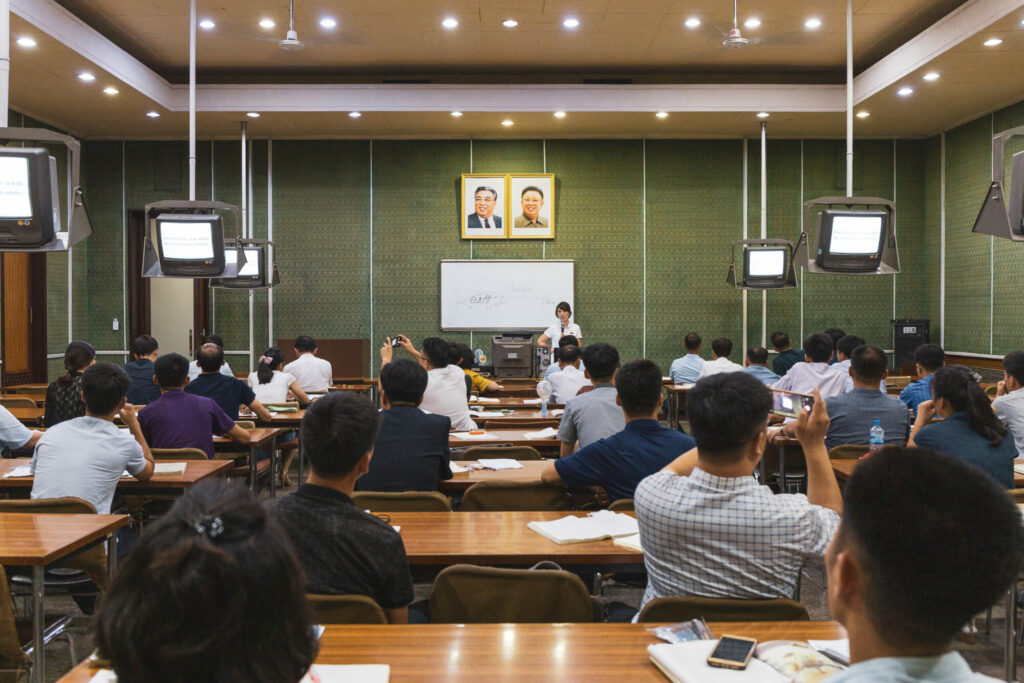
In practice, the Grand People’s Study House is used similarly to any library. Students enrolled in universities or the general public will visit to borrow books with a library card, to stay for quiet reading and study, and to use the local intranet (Kwangmyong). Those working in specialised fields such as medical or agriculture will spend time at the Grand People’s Study House to broaden their knowledge and keep up in their industry. Useful office services such as printing, scanning, and binding are also available.
The Grand People’s Study House is open free of charge to the adult public.
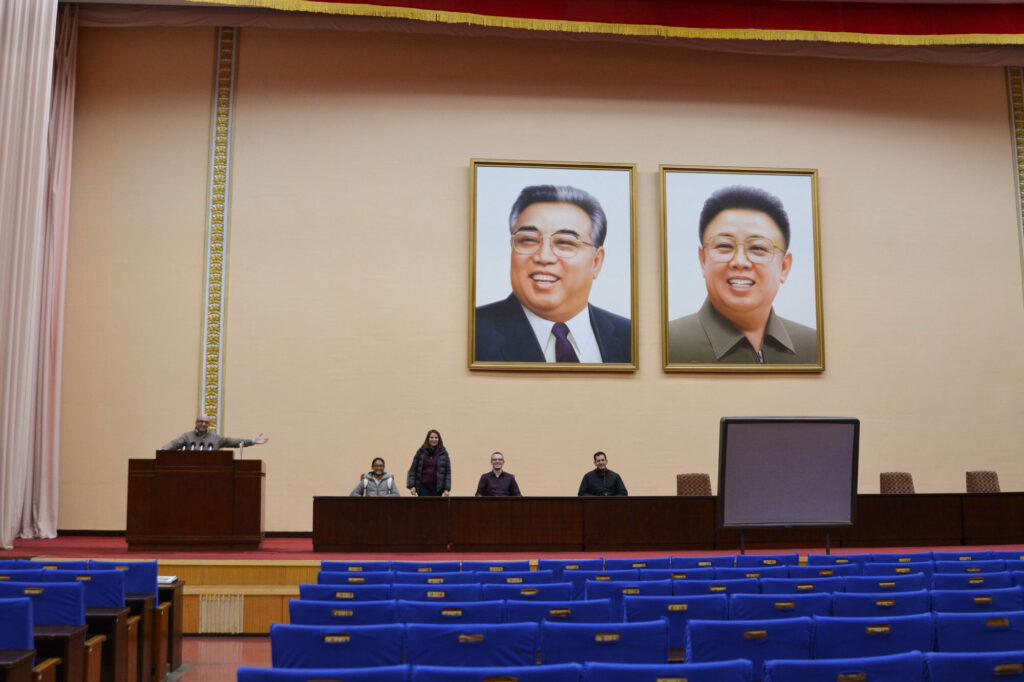
Visitors can attend public classes such as language learning. Tutors, academics, and translators are often available to assist with research. Scheduled lectures typically focus on educating in scientific and technological fields crucial to furthering the economy.
The Grand People’s Study House is on a state network that shares information as an e-library with institutions such as Kim Il Sung University, Kim Chaek University of Technology, and institutions such as factories as required. Students are able to login into this system remotely for distance learning.
The Grand People’s Study House is also a place to read the local newspaper on public stands, or to catch up with friends. Historic texts are also preserved here.
What is it like inside?
You’re first met with a white marble statue of President Kim Il Sung and a mosaic of the sacred Mt. Paektu. The Grand People’s Study House is opulent and spacious inside, with high ceilings with crystal chandeliers, marble pillars, and lengthy staircases. Slogans and quotes in gold lettering adorn the hallways.
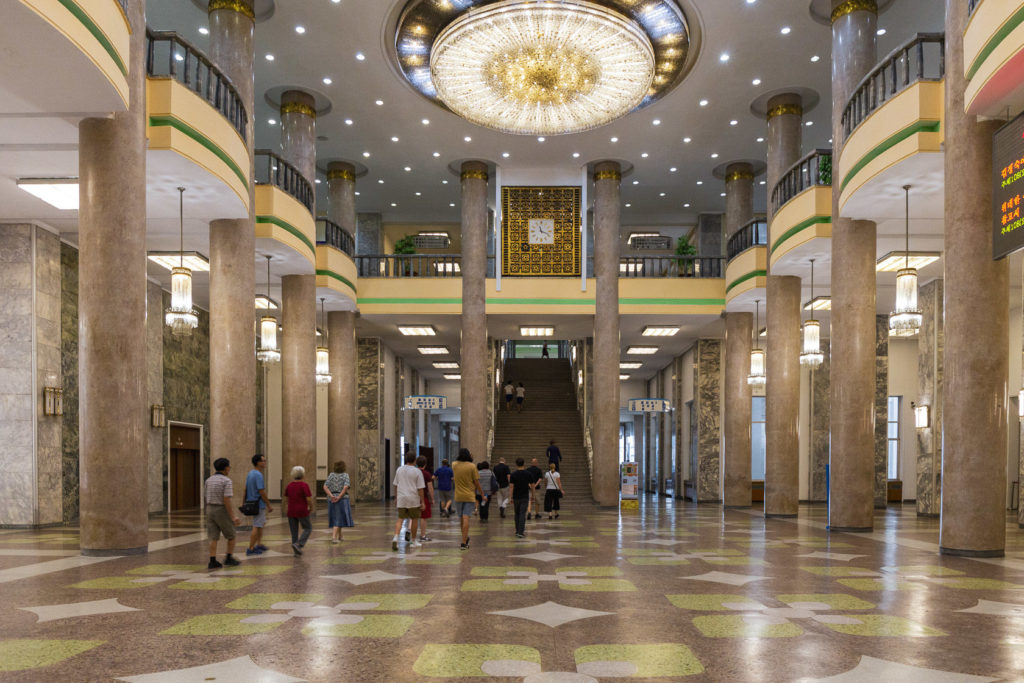
The catalog of books can be searched from computer terminals in the lobby, and new arrivals are shown on an electronic board alongside lecture and class times.
Books range from texts on the Juche Idea and the writings of President Kim Il Sung and Chairman Kim Jong Il, to more typical materials such as subjects like medical science, computer science, architecture, cooking, industry, agriculture and biology. There are also foreign hardbacks and magazines, and translated books which are available to borrow.
There are tens of reading rooms and study halls, open plan with rows of brown desks you’ll be familiar with from high school, and shelves of books to peruse. Paintings or photos of President Kim Il Sung and Chairman Kim Jong Il can be found on walls, as can the ubiquitous portraits of each leader.
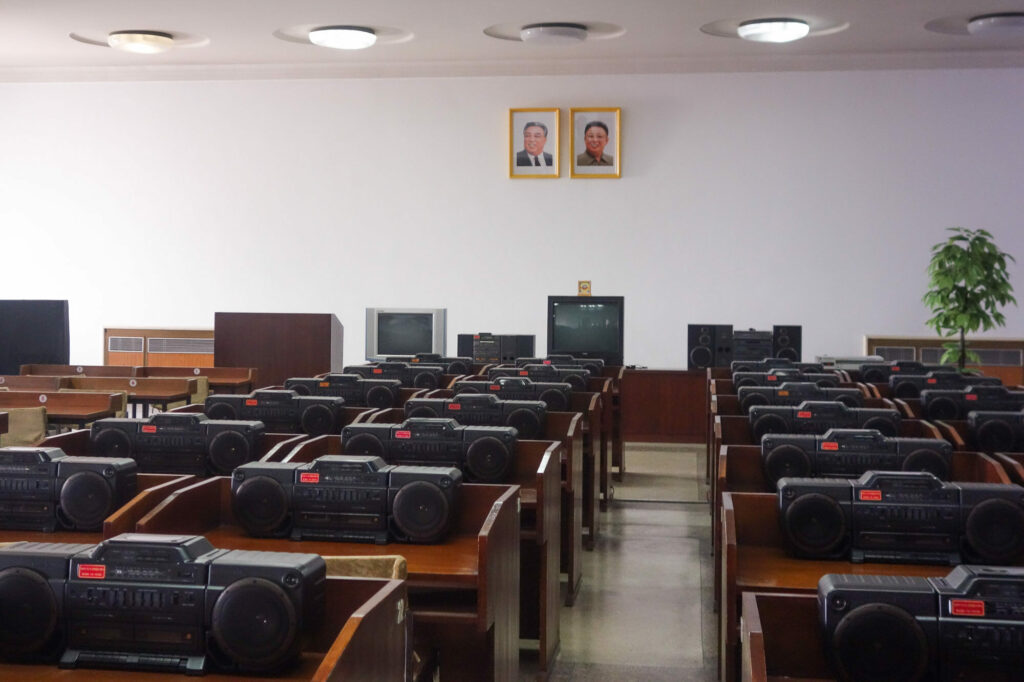
Unique inclusions to the Grand People’s Study House include the music appreciation room which features old school radio sets, books, and materials on music. There is also an ‘Area of education through revolutionary materials’ which features ideological texts, and a manned consultation office to assist with queries regarding research of the Juche Idea.
An 800-seat lecture hall is among 20 such halls inside the Grand People’s Study House. There are also cozy classrooms for scheduled classes.
Visiting on Our Tours
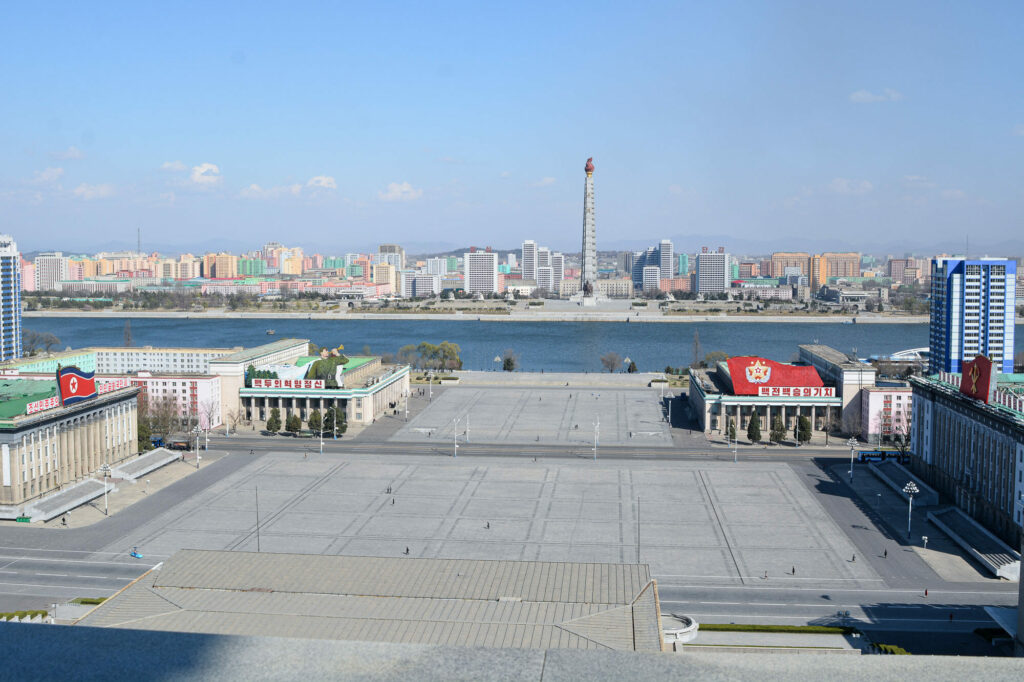
We visit the Grand People’s Study House on most tours in Pyongyang. It’s possible to visit every day except Sundays and holidays. See the study halls, drop in on an English-language class or lecture, peruse a selection of foreign books, and find music from your home country in the music appreciation room! There’s time for souvenirs at a small gift shop, and our visit will conclude with a magnificent view over Kim Il Sung Square towards the Juche Tower. Below you’ll see the parade stand used by the leadership during military parades in Kim Il Sung Square.
